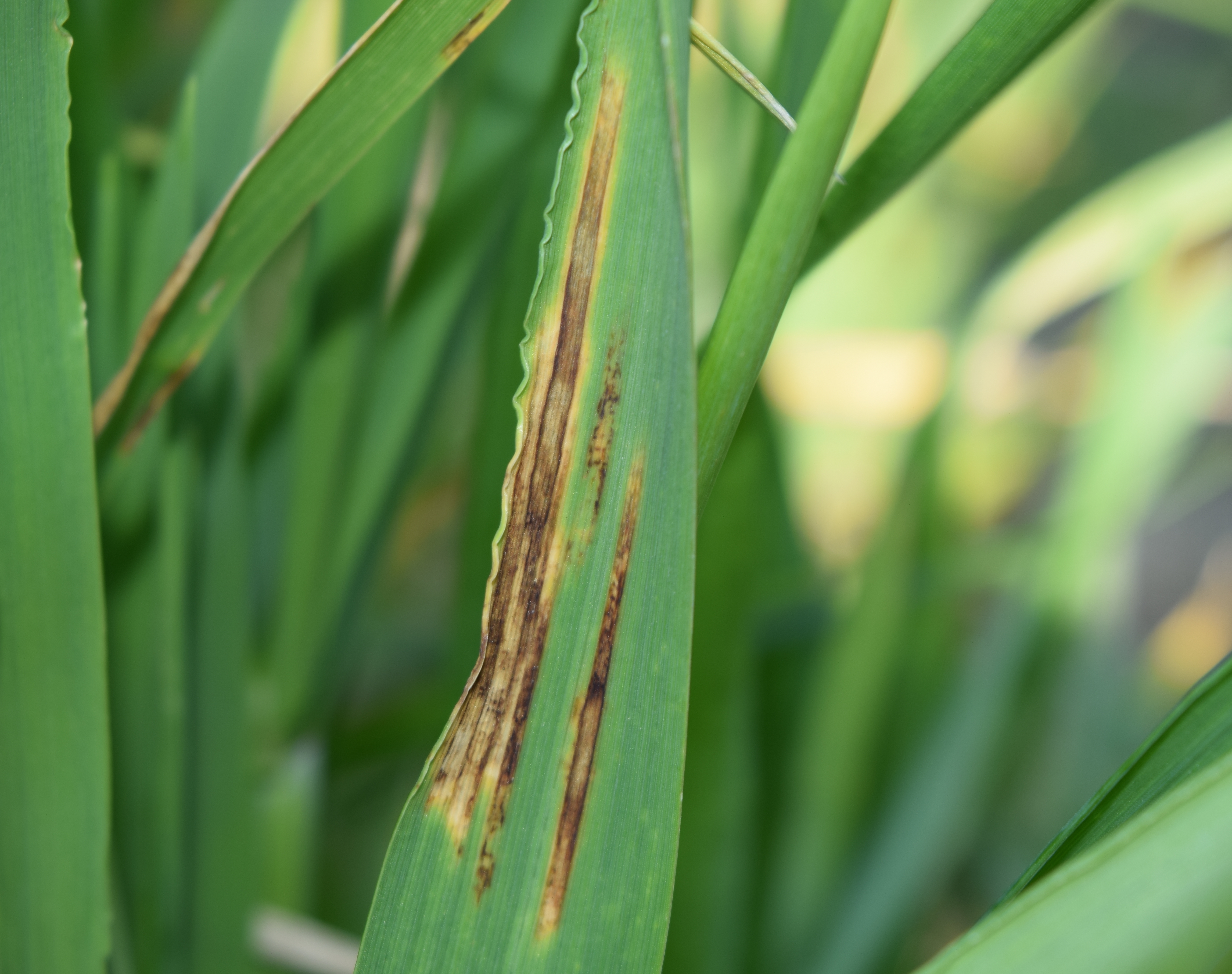Determinación de una escala diagramática de severidad para mancha en red en cebada cervecera (Hordeum vulgare L.)
DOI:
https://doi.org/10.15517/am.v33i3.49035Palabras clave:
Drechslera teres, patometría, enfermedades fungosasResumen
Introducción. En la actualidad la mancha en red, causada por Dreschlera teres en cebada, no posee una escala visual para evaluar la severidad de la enfermedad a campo, por lo tanto, la falta de un método estándar de la cuantificación visual de la enfermedad puede llevar a estimaciones imprecisas que induce a conclusiones equivocadas. Objetivo. Desarrollar una escala para evaluar la severidad de la mancha en red en hojas de cebada. Materiales y métodos. Se recolectaron cien hojas de diferentes cultivares de cebada cervecera, utilizados en un ensayo en el campo experimental de la Universidad Nacional del Noroeste de la Provincia de Buenos Aires, en la localidad de Junín, Buenos Aires, Argentina, durante el año 2017, las cuales presentaron diferentes niveles de severidad. La escala se determinó con los siguientes valores de severidad: 1 %, 2,1 %, 4,5 %, 9,1 %, 17,8 %, 31,7 % y 50 %. La validación de la escala propuesta se realizó con base en cincuenta hojas de cebada con diferentes niveles de severidad de mancha en red, distribuidas a veinte evaluadores sin experiencia en la estimación de daños de esta enfermedad. Se procedió a su validación al evaluar la severidad de las hojas primero sin escala y después con la escala propuesta. Los análisis estadísticos se relizaron a través de una prueba de t y regresión lineal simple. Resultados. El uso de la escala mejoró la valoración de la severidad en hojas con mancha en red, debido a que en promedio la pendiente de la regresión de la mayoría de los evaluadores aumentó en un 15 % cuando utilizaron la escala visual para evaluar la enfermedad. Conclusión. Se logró desarrollar una escala para evaluar la severidad de la mancha en red en hojas de cebada.
Descargas
Citas
Di Rienzo, J. A., Casanoves, F., Balzarini, M. G., Gonzalez L., Tablada M., & Robledo, C. W. (2011). Infostat - Software estadístico. Infostat. http://www.infostat.com.ar/index.php?mod=page&id=15
Godoy, C. V., Koga, L. J., & Canteri, M. G. (2006). Diagrammatic scale for assessment of soybean rust severity. Fitopatologia Brasileira, 31(1), 63–68. https://doi.org/10.1590/s0100-41582006000100011
Horsfall, J. C., & Barratt, R. W. (1945). An improved grading system for measuring plant diseases. Phytopathology, 35, 665.
Lavilla, M., Ivancovich, A., & Díaz-Paleo, A. (2022). Diagrammatic scale for assessment the severity of Cercospora leaf blight on soybean (Glycine max) leaflets. Agronomía Mesoamericana, 33(1), Article 43338. https://doi.org/10.15517/am.v33i1.43338
Martins, M. C., Guerzoni, R. A., Câmara, G. M. S., Mattiazzi, P., Lourenço, S. A., & Amorim, L. (2004). Escala diagramática para a quantificação do complexo de doenças foliares de final de ciclo em soja. Fitopatologia Brasileira, 29(2), 179–184. https://doi.org/10.1590/s0100-41582004000200009
Mathre, D. E. (1997). Compendium of Barley diseases (2nd ed.). APS Press.
Miralles, D. J., Arisnabarreta, S., & Alzuela, I. (2011). Desarrollo ontogénico y generación del rendimiento. En D. J. Miralles, R. L. Benech-Arnold, & L. G. Abeledo (Eds.), Cebada cervecera (1ª ed., pp. 3–34). Editorial Facultad de Agronomía.
Nutter Jr., F. W., & Schultz, P. M. (1995). Improving the accuracy and precision of disease assessments: selection of methods and use of computer-aided training programs. Canadian Journal of Plant Pathology, 17(2), 174–184. https://doi.org/10.1080/07060669509500709
Soares, R. M., Godoy, C. V., & de Oliveira, M. C. N. (2009). Escala diagramática para avaliação da severidade da mancha alvo da soja. Tropical Plant Pathology, 34(5), 333–338. https://doi.org/10.1590/s1982-56762009000500007
StatSoft. (2005). STATISTICA Data analysis software system. https://statistica-update.software.informer.com/7.1/

Archivos adicionales
Publicado
Cómo citar
Número
Sección
Licencia
1. Política propuesta para revistas de acceso abierto
Los autores/as que publiquen en esta revista aceptan las siguientes condiciones:
- Los autores/as conservan los derechos morales de autor y ceden a la revista el derecho de la primera publicación, con el trabajo registrado con la licencia de atribución, no comercial y sin obra derivada de Creative Commons, que permite a terceros utilizar lo publicado siempre que mencionen la autoría del trabajo y a la primera publicación en esta revista, no se puede hacer uso de la obra con propósitos comerciales y no se puede utilizar las publicaciones para remezclar, transformar o crear otra obra.
- Los autores/as pueden realizar otros acuerdos contractuales independientes y adicionales para la distribución no exclusiva de la versión del artículo publicado en esta revista (p. ej., incluirlo en un repositorio institucional o publicarlo en un libro) siempre que indiquen claramente que el trabajo se publicó por primera vez en esta revista.
- Se permite y recomienda a los autores/as a publicar su trabajo en Internet (por ejemplo en páginas institucionales o personales) antes y durante el proceso de revisión y publicación, ya que puede conducir a intercambios productivos y a una mayor y más rápida difusión del trabajo publicado (vea The Effect of Open Access).























